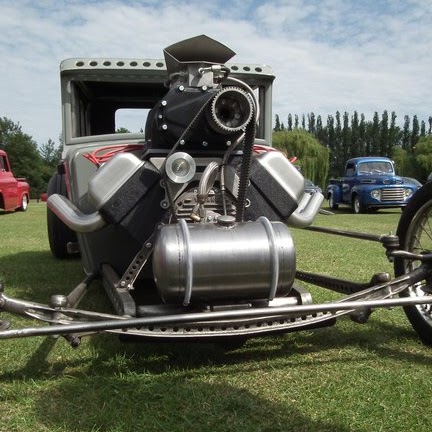Gary Hooper Tripp
age ~79
from Orlando, FL
- Also known as:
-
- Gary H Tripp
- Gary M Tripp
- Gary U Tripp
- Garry H Tripp
- Gary H Triff
- Michael M Tripp
- Tripp Tripp
- Phone and address:
-
9591 Reymont St, Orlando, FL 32827
4078925550
Gary Tripp Phones & Addresses
- 9591 Reymont St, Orlando, FL 32827 • 4078925550
- 4429 Carolwood St, Orlando, FL 32812 • 4078596420
- 4400 Tidewater Dr, Orlando, FL 32812 • 4078560505 • 4078596420
- Somerville, AL
- 2646 Zuni Rd, Saint Cloud, FL 34771 • 4078925550
- Bainbridge Island, WA
Work
-
Company:Volvo rents
-
Address:7616 Narcoossee Rd, Orlando, FL 32822
-
Phones:4073848200
-
Position:Manager
-
Industries:Equipment Rental and Leasing
Name / Title
Company / Classification
Phones & Addresses
Manager
Volvo Rents
Equipment Rental and Leasing
Equipment Rental and Leasing
7616 Narcoossee Rd, Orlando, FL 32822
Website: volvorents-cer.com
Website: volvorents-cer.com
Owner
Tripp LLC
Electric and Other Services Combined
Electric and Other Services Combined
9605 Olympus Beach Rd Ne, Seattle, WA 98110
Executive
Activeindexing.com
Fire, Marine, and Casualty Insurance
Fire, Marine, and Casualty Insurance
100 W. Harrison North Tower Suite 310, Seattle, WA 98118
Website: activeindexing.com
Website: activeindexing.com
Partner
Polarstar Corporation
Bands, Orchestras, Actors, and Other Entertai...
Bands, Orchestras, Actors, and Other Entertai...
Po Box 11560, Seattle, WA 98110
Owner
Al S Towing
General Automotive Repair Shops
General Automotive Repair Shops
32610 Pacific Hwy S Ste B9, Auburn, WA 98003
Manager
Volvo Rents
Rental Service-Stores & Yards
Rental Service-Stores & Yards
7616 Narcoossee Rd, Orlando, FL 32822
4074824003, 4073848200
4074824003, 4073848200
Director Garage
Huntsville City Schools
Elementary/Secondary School
Elementary/Secondary School
114 Memory Ln, Harvest, AL 35749
Director, Vice President
Citrus Properties Corporation
645 W Michigan St, Orlando, FL 32805
PO Box 568245, Orlando, FL 32856
PO Box 568245, Orlando, FL 32856
Resumes

Gary Tripp
view sourceLocation:
United States
Us Patents
-
Sending To A Central Indexing Site Meta Data Or Signatures From Objects On A Computer Network
view source -
US Patent:6516337, Feb 4, 2003
-
Filed:Oct 14, 1999
-
Appl. No.:09/419405
-
Inventors:Gary W. Tripp - Bainbridge Island WA
Michael D. Meadway - Snohomish WA
Claude E. Duguay - Seattle WA -
Assignee:Arcessa, Inc. - Seattle WA
-
International Classification:G06F 1300
-
US Classification:709202, 709217, 709223, 707104
-
Abstract:A search engine utilizes a bottom-up approach to index the content of a network instead of relying on atop-down approach as used by conventional search engines. The network being indexed may be any network, including the global computer network, Internet, and the world wide web. Instead of using a central site including spidering software to recursively search all linked web pages and generate a search index of the Internet, independent distributed components or agents are located at each web site and report meta data about objects at the web site to the central server. A central catalog of object references is compiled on the central site from the meta data reported from each web site. One or more brochures file may also be created and stored on each web site to provide conceptual or non-keyword data about the site, such as demographics and categorization information. This conceptual information is then utilized in constructing the central catalog so that more accurate search results may be generated for search queries applied to the catalog.
-
Peer-To-Peer Automated Anonymous Asynchronous File Sharing
view source -
US Patent:6675205, Jan 6, 2004
-
Filed:Jul 20, 2001
-
Appl. No.:09/910460
-
Inventors:Michael D. Meadway - Snohomish WA
Gary W. Tripp - Bainbridge Island WA -
Assignee:Arcessa, Inc. - Kirkland WA
-
International Classification:G06F 1300
-
US Classification:709219, 709203, 709329, 707 10
-
Abstract:A service on a computer network which performs centralized searches based on index information transmitted by peer systems to a central site using an agent program running on each peer and then directs the peer systems to each other for the purpose of retrieving files. If none of the peer systems known to contain the file is online (and the file is therefore not available), the request is placed in a queue of file requests maintained by the central site. When a system containing the requested file connects to the service, the requested file is retrieved from that system and then distributed to the other systems which had requested the file. Files retrieved for systems not currently online are held in a queue until the user connects or are emailed to the user, usually as an email attachment. Or, when a computer system containing the file connects to the central site, the file is sent by the system containing the file either to the central site or directly to the user who requested the file via email attachment.
-
Method For Using Agents To Create A Computer Index Corresponding To The Contents Of Networked Computers
view source -
US Patent:6976053, Dec 13, 2005
-
Filed:May 23, 2000
-
Appl. No.:09/575971
-
Inventors:Gary W. Tripp - Bainbridge Island WA, US
Michael D. Meadway - Snohomish WA, US
Claude E. Duguay - Seattle WA, US -
Assignee:Arcessa, Inc. - Seattle WA
-
International Classification:G06F017/30
G06F015/16 -
US Classification:709202, 707103 Z, 707102
-
Abstract:A search engine utilizes a bottom-up approach to index the content of a network with agent programs running on each host computer instead of relying on a top-down approach as used by conventional search engines. A central catalog of object references is compiled on the central site or sites from the meta data reported from each web site. One or more brochure files may also be created and stored on each web site to provide conceptual or non-key-word data about the site, such as target demographics and categorization information. This conceptual information is then utilized in constructing the central catalog so that more accurate search results may be generated for search queries applied to the catalog.
-
System For Discrete Parallel Processing Of Queries And Updates
view source -
US Patent:6983322, Jan 3, 2006
-
Filed:Nov 21, 2000
-
Appl. No.:09/718526
-
Inventors:Gary W. Tripp - Bainbridge Island WA, US
Michael D. Meadway - Snohomish WA, US -
Assignee:Al Acquisitions, Inc. - Kirkland WA
-
International Classification:G06F 13/00
-
US Classification:709225, 709217, 709226, 707 3, 707 10
-
Abstract:A data driven discrete parallel processing computing system for searches with a key-ordered list of data objects distributed over a plurality of servers. The invention is a data-driven architecture for distributed segmented databases consisting of lists of objects. The database is divided into segments based on content and distributed over a multiplicity of servers. Updates and queries are data driven and determine the segment and server to which they must be directed avoiding broadcasting. This is effective for systems such as search engines. Each object in the list of data objects must have a key on which the objects can be sorted relative to each other. Each segment is self-contained and doesn't rely on a schema. Multiple simultaneous queries and simultaneous updates and queries on different segments on different servers result in parallel processing on the database taken as a whole.
-
Peer-To-Peer Automated Anonymous Asynchronous File Sharing
view source -
US Patent:7032000, Apr 18, 2006
-
Filed:Oct 17, 2003
-
Appl. No.:10/688361
-
Inventors:Gary W. Tripp - Bainbridge Island WA, US
-
Assignee:Arcessa, Inc. - Seattle WA
-
International Classification:G06F 13/00
-
US Classification:709202, 709203, 709219, 707 10
-
Abstract:A service on a computer network that performs centralized searches based on index information transmitted by peer systems to a central site using an agent program running on each peer. Peer systems are directed to each other for the purpose of retrieving files. If none of the peers systems known to contain the files is online (and the file is therefore not available), the request is placed in a queue of file requests maintained by the central site. When a system containing the requested file connects to the service, the requested file is retrieved from that system and then distributed to the other systems which had requested the file.
-
Index Cards On Network Hosts For Searching, Rating, And Ranking
view source -
US Patent:7133870, Nov 7, 2006
-
Filed:Nov 21, 2000
-
Appl. No.:09/718531
-
Inventors:Gary W. Tripp - Bainbridge Island WA, US
Michael D. Meadway - Snohomish WA, US
Claude E. Duguay - Seattle WA, US -
Assignee:Al Acquisitions, Inc. - Kirkland WA
-
International Classification:G06F 17/00
G06F 7/00 -
US Classification:707 10, 707 5, 707100
-
Abstract:Instead of using a central site including spidering software to recursively search all linked web pages and generate a search index of the Internet, index cards files are created and stored on each web site to provide meta data in the form of conceptual or non-keyword information about the site, such as demographics and categorization information. The meta data is periodically collected and aggregated on a central server. A central catalog of object references is compiled on the central site from the meta data reported from each web site. The information from the index cards is utilized in constructing the central catalog so that more accurate search results may be generated for search queries applied to the catalog, so that the search results may be ranked in meaningful ways, and so that web sites may be more accurately rated.
-
Peer-To-Peer Automated Anonymous Asynchronous File Sharing
view source -
US Patent:RE42051, Jan 18, 2011
-
Filed:Apr 17, 2008
-
Appl. No.:12/105028
-
Inventors:Gary W. Tripp - Bainbridge Island WA, US
Michael D. Meadway - Driftwood TX, US -
International Classification:G06F 13/00
-
US Classification:709202, 709203, 709219, 707 10
-
Abstract:A service on a computer network that performs centralized searches based on index information transmitted by peer systems to a central site using an agent program running on each peer. Peer systems are directed to each other for the purpose of retrieving files. If none of the peers systems known to contain the files is online (and the file is therefore not available), the request is placed in a queue of file requests maintained by the central site. When a system containing the requested file connects to the service, the requested file is retrieved from that system and then distributed to the other systems which had requested the file.
Vehicle Records
-
Gary Tripp
view source -
Address:2646 Zuni Rd, Saint Cloud, FL 34771
-
Phone:4078925550
-
VIN:2LMDU88C67BJ23104
-
Make:LINCOLN
-
Model:MKX
-
Year:2007
Googleplus

Gary Tripp
Education:
Castleberry High School, Tarrant County College

Gary Tripp
Education:
University of Washington - MBA in Finance
Relationship:
Married
About:
Interests renewable energy and science. Travel
Bragging Rights:
Seven US Patents

Gary Tripp
Work:
Inside Hospitality

Gary Tripp

Gary Tripp

Gary Tripp

Gary Tripp

Gary Tripp
Myspace
Plaxo

Gary Tripp
view source
Gary Tripp
view sourceYoutube
Classmates

Gary Tripp
view sourceSchools:
West Orange High School Orange TX 1973-1977
Community:
John Welch, Deborah Carruthers

Gary Tripp
view sourceSchools:
Maricopa High School Maricopa AZ 1985-1989
Community:
Alma Kerby, Louie Pisano, Guillermo Tarango

Gary Tripp
view sourceSchools:
West Jefferson Junior High School Evergreen CO 1986-1990
Community:
Jessica Moore, Stuart Boucher, Kim Haight

Gary Tripp
view sourceSchools:
Drayton High School Drayton ND 1968-1972
Community:
Tania Bays, Dustin Wilson, Richard Lahaise

Gary Tripp
view sourceSchools:
Lackawanna Trail High School Factoryville PA 1987-1991
Community:
Louise Fields

Gary Tripp
view sourceSchools:
St. Matthias School Chicago IL 1988-1992
Community:
Bill Schey, Jerry Brown, Joe Dale, Georgas Angelos, Kathleen Kuper

Gary Tripp
view sourceSchools:
West Caldwell High School Lenoir NC 1995-1999
Community:
Thomas Braswell, Rebecca Woody, Jonathan Deal, Thomas Howell, Heather Whitt

Gary Tripp | Vandercook L...
view source
Gary Tripp
view source
Gary Tripp
view source
Gary Tripp
view source
Gary Tripp
view source
Gary Tripp
view source
Gary Tripp
view source
Gary Tripp
view source
Gary Tripp
view sourceGet Report for Gary Hooper Tripp from Orlando, FL, age ~79








